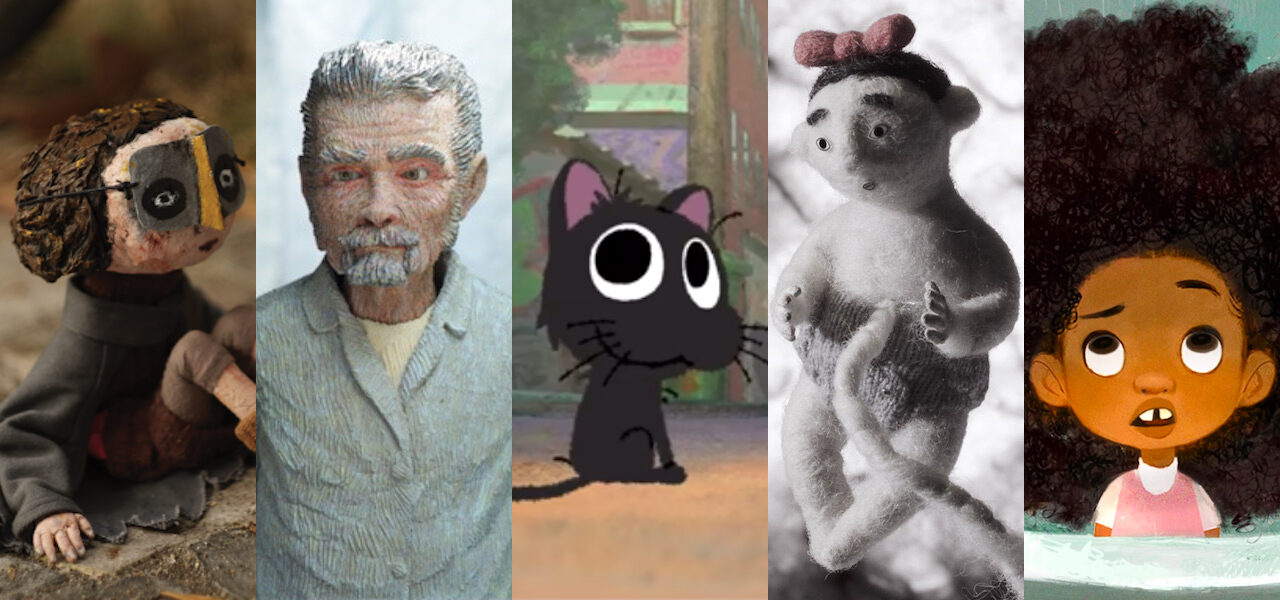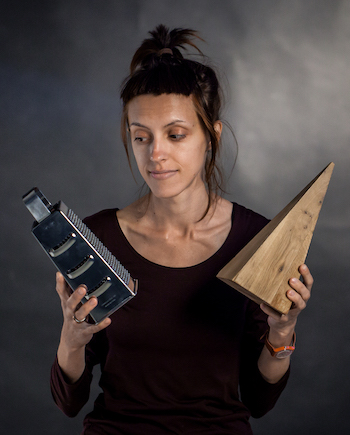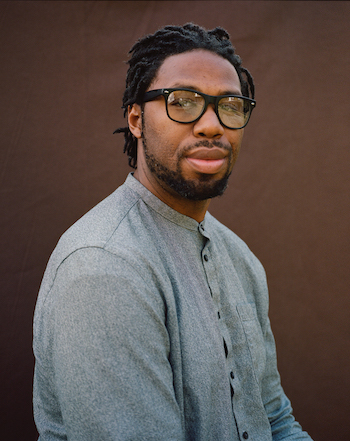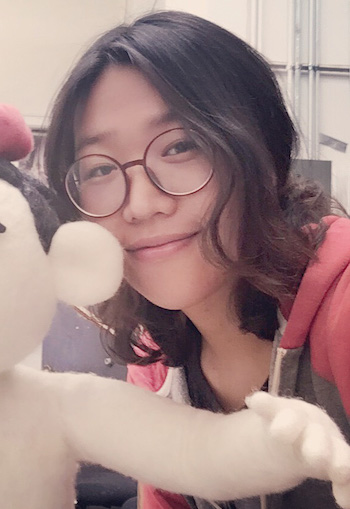

Oscar Animated Shorts Nominees: How Each Film Was Developed Narratively
Outwardly eclectic, the five animated shorts up for this year’s Oscar actually make for the most complementary set of nominees in some time. In different media and from different angles, they all examine a two-way relationship with great feeling.
Four of the shorts focus on an intimate bond between relatives — love and sadness remembered, imagined, or lived day-to-day. The fifth projects similar experiences onto a friendship between a neglected cat and a mistreated dog. Watched in a row, the films seem to enter into a dialogue, as though all the characters were learning from each other’s experiences.
Such subject matter is hardly unusual in animated shorts, of course, but the pattern this year provides a neat opportunity to ask how these stories came to be. Below, the directors of the five films tell Cartoon Brew how they developed their narratives. Their comments were taken from interviews conducted by email and phone; Bruno Collet’s answers were translated from French.
Dcera (Daughter) (Daria Kashcheeva, Czech Republic)
Simple embraces bookend years of pain in the relationship between a man and his daughter. Glances and gestures speak volumes in this silent stop-motion drama from Kashcheeva, who made the film at Prague’s famed FAMU school.

Kashcheeva: I wrote this story four years ago for my entrance exams to FAMU. At that time, I was really interested in psychology — I was thinking a lot about how childhood influences our behaviour. I wrote it really fast, in a few days, because when I started to think about my childhood, I remembered some moments which had maybe been in my subconscious.
When I passed the exams, I left this story, because the first two years of study were really intensive. At the end of the second year, I started to think what my bachelor’s film would be about, and I remembered this story. I developed it into a script. I worked on it for a year and a half; it was a kind of psychotherapy for me.
I didn’t know how it was going to end at first, but during animation, as I was thinking about my relationship with my parents, I understood that it’s important to forgive. Forgiveness can change our past, our memories. That’s why there’s this hug at the end. I realized that I didn’t want the father to die.
Jiří Kubíček and Anna Vášová, well-known writers in the Czech Republic, teach screenwriting at FAMU. At the beginning I asked them for advice. We also consulted with teachers in the editing department — my husband is the editor on the film. They made suggestions, but always ensuring that my ideas came through. The film starts in the hospital, then you see the daughter’s memories, then the ending is in the hospital again. Anna gave some really good advice: to return to the hospital in the middle of the film, too.
We discussed language from the start, as it’s a Czech film and I feel annoyed when I need to read subtitles — in animation, there’s a lot to look at. An extra reason was that I wanted the puppets to be papier mâché, and I really didn’t know how to make them [speak]. Also, I was thinking how misunderstandings in relationships happen because people couldn’t talk to each other. For the dramaturgy, it was good that the characters couldn’t talk.
I love documentaries and this “imperfect” aesthetic in live action — like Dogme films, Lars von Trier, the Dardenne Brothers. I thought this aesthetic could work very well for my story. I didn’t know how to create it in animation, so I studied von Trier’s Breaking the Waves frame by frame, then made tests. We made a teaser and got really good feedback from professionals. I realized I’d found a good aesthetic for the story, to make the viewer feel it more, get them deeper into it.
I didn’t discuss the film with my relatives [while making it]. With my parents, we don’t discuss emotions and so on. I thought I might hurt them if I asked questions about our relationship. I decided that my work on the film was going to be my own thinking about all my feelings. When I showed my parents the film, they still didn’t talk about our relationship, but they told me they thought the film, and its ending, were really great. I think something really changed in our relationship. We talked through the film.
Hair Love (Matthew A. Cherry, U.S.)
With her mother absent, a young African-American girl looks to her dad for help with her unruly hair. The task turns into the fight of his life. The production of Cherry’s animation debut has an interesting story of its own: launched on Kickstarter, the 2d project received record-breaking donations and was eventually acquired by Sony Pictures Animation. Cherry’s co-directors are animation industry veterans Everett Downing Jr. and Bruce W. Smith.

Cherry: In 2016, I’d come across this really cool cg image of a father — I think he was Brazilian — and he had his daughter sitting in his lap, looking at him with these afro puffs, and it just looked so cute. I attempted to have something made then, but I couldn’t get the team together. A year later, I saw all these viral videos of African-American fathers who were doing their daughters’ hair. It reminded me of the original idea, and helped to focus the potential story.
I felt a great opportunity to do something that centred on an African-American family in animation. It was so rare, especially in 2017. Also, every week, there’s a new story [in the news about a school having a problem with a black pupil’s hair]. Stories like Hair Love are important to help normalize our hair and show that we have great pride in it. We need to move away from only having Euro-centric standards of beauty.
In my opinion, animation is the most universal medium. It allows the audience to fully immerse in the experience, be that talking animals, another culture… In live action, I don’t think we’d have had anything like the same impact. Peter Ramsey [co-director of Spider-Man: Into the Spider-Verse and executive producer of Hair Love] was one of the first people I reached out to. Hair Love isn’t a big fantastical story, and I was wondering if it was big enough [for animation]. Ramsey was really encouraging: he said animation is a medium. It can be whatever we want it to be.
We really wanted to push the medium, so we came up with these really cool fantasy sequences. We had some that got cut out, in which the daughter imagined what her life would be like if she had a hairstyle: she’s on a runway being a fashion model, or a superhero, or a singer like Beyoncé. But we found that, tonally, it didn’t make sense, and that keeping the fantasy sequences with the father fighting her hair [in a boxing ring] made the most sense.
I’m a big fan of the animated shorts, and one thing I’ve noticed with a lot of them is that there’s no dialogue. Part of that is because it’s more expensive to animate mouths moving and hire voice talent. We went into Hair Love with the idea that there was going to be no dialogue — something I’ve done before [in live action].
But we have this natural hair blogger in the film, and we thought we couldn’t get across the fact that she’s a blogger without having her voice. Then we realized that this is actually really cool: when we meet the mother at the end, we really wanted people to make the connection that this is the same person as the blogger. Her voice being in at the beginning helps accentuate the fact that she’s been hiding there in plain sight the whole time. Because the father and daughter aren’t communicating verbally, it helps accentuate their journey that much more.
Kitbull (Rosana Sullivan, U.S.)
Fear, courage, and love find their purest expression in an evolving relationship between a kitten and a pitbull. Produced as part of Pixar’s new Sparkshorts initiative, Kitbull is a rare work of hand-drawn animation from the studio. It’s the first directorial effort from Sullivan, who’s worked as a storyboard artist on several Pixar features.

Sullivan: I was stressed out at work, so I started drawing this scrappy little kitten as a fun escape. I was always attracted to the frenetic, unpredictable energy of cats, and craved more thoughtful representation of it in animation (like Simon’s Cat).
I had also studied to become a veterinarian before making the switch to animation, and used to volunteer at multiple clinics and shelters. It was here that I encountered pitbulls up close, and saw how sweet and gentle they could be, despite my initial fears of them. I also saw the disproportionate number of black cats that were still not adopted. So I set out to tell a simple story about the two.
As I kept boarding off and on over the years, I started to find more personal meaning in these characters’ relationship. I had always personally struggled with deep social anxiety, so the themes of isolation, connection, trust, and empathy resonated with me. My hope was to capture these universal feelings through the lens of these two characters’ experience, and hopefully reflect on how we treat animals, as well as each other.
Growing up, I loved how the older classic animated features and shorts were unafraid of showing darker themes, from Dumbo to Princess Mononoke. I think this helped me form a deeper range of emotions and empathy as a child. I didn’t want to shelter children from the more raw realities of this story, so I tried to find as tasteful a way to weave them in.
I really cared about these characters. I knew that in order for both to be able to connect, they had to understand each other’s pain and learn to be vulnerable with each other. Unfortunately, that meant putting both of them through the worst. I never wanted to linger too long in the dark moments, and relied on my crew and peers to gut-check if I was going too far in either direction.
Observing animal behavior has always been a deep passion for me, so I found the subtle and bold body language of the kitten and pitbull to be immediately engaging. This allowed their interactions to be uncomplicated and pure. However, because there was no dialogue, I had to make sure the story was as airtight and efficient as possible. It meant cutting out a lot of moments that would have pulled the viewer out of the story.
Although the core of the story always remained the same, the short changed from a lighter, looser, sprawling narrative to a darker, more condensed piece. The longest version was an 18-minute-long storyboard reel that I had cut myself. When Pixar offered to produce it as a Sparkshort, I was able to bring on an amazing editor, Katie Schaefer Bishop, who cut it down to a six-minute reel.
The initial premise of the Sparkshorts program was to see what a director could do in six months with a small crew, virtually no oversight… and preferably not rated “R.” We were pretty much left alone to determine what we made. 2d was my first love, and on a practical level, it was the most producible medium for our story, time, and budget. However, I also felt the kitten’s unpredictable nature could only be captured by the imperfect beauty and energy of hand-drawn animation.
Memorable (Bruno Collet, France)
As his mind starts to leave him, Louis drifts unstably between the world he knows and an increasingly strange interior life. His loving wife and his passion for painting ground him throughout this disorienting process. This wistful stop-motion work from veteran filmmaker Collet counts three prizes at Annecy among its bag of awards.

Collet: While neither I nor my close relatives have been affected by Alzheimer’s disease, I swiftly realized that it was spreading exponentially. It seemed to pick its victims according to rules we don’t yet understand. Whatever your social class or former profession, whether you’ve lived a life of excess or asceticism, this degenerative condition can choose you and ruin your life.
To learn about how people experience this condition, I simply kept my ears open. Unfortunately, there are many children or helpers who have a parent or spouse suffering from it. What’s striking is that, more than with other diseases, they’re happy to open up about it, to speak about their day-to-day life with a sufferer. Believe me, while the anecdotes are often sad, they can suddenly turn humorous without warning.
I knew the other animated shorts that have been made about dementia in recent years, and they made me wonder whether another film on the subject was necessary. Discovering the work of the painter William Utermohlen convinced me that it’s possible to have a personal perspective on this disease. By continuing to paint self-portraits despite his illness, Utermohlen enabled us to slip into his mind. This settled it for me. I had my premise: to show the disease through the patient’s eyes.
The first version of the film was far more radical. It was to be filmed entirely in first-person, and we’d only see the patient’s face very occasionally (reflected in a mirror, in a small spoon…). During the shot breakdown, it started to feel complicated a little unnatural. Otherwise, the script was more or less the same. We just trimmed a few minutes off.
The film ends on an uplifting note. I didn’t want Memorable to be merely a film about Alzheimer’s. For me, it’s first and foremost about love — a love that has bound this couple for decades. Their “separation” had to happen through music, a riot of colors, Jackson Pollock-style painting.
It was really in the storyboard and especially the animatic that I worked out how to balance the “real” elements and the more “surreal” images of Louis’s interior world. The sequencing of shots had to surprise and unsettle the viewer, so as to convey the sense of disorientation experienced by Louis. The “surreal” images are a part of this, of course, but the temporal leaps and Louis’s “dissociated” remarks are also important.
Sister (Siqi Song, U.S./China)
A man reminisces about the childhood he spent with his sweet, irritating little sister. The memories, apparently happy, are tinged with a strange melancholy. Originally from China, Song drew on her own upbringing, and what it meant in her country’s social climate, when making this stop-motion film at Calarts.

Song: The idea for the film started when China changed the one-child policy to a two-child policy in October 2015. This marked the end of the Only Child Era in China. Many people who were born during the period in which the policy was implemented, including me, have mixed feelings about it. I wanted to make a film to record this memory, these stories.
I’m female, but I knew from the very beginning that the narrator had to be a boy and the “missing sibling” a girl, because this setup is typical of Chinese families during that period. The idea of “son preference” was deeply rooted in old Chinese culture. This has changed over the years, but under the one-child policy, many families still wanted their only child to be a boy.
In some areas, there was even a “1.5-child policy,” meaning if a family’s first-born was a boy, they couldn’t have another child. For these reasons, our generation has a gender imbalance, so I chose a typical example of this period to tell the story. Personally, I was lucky to be born and live a life as a “little sister.” So, many details of the film are based on my personal experience.
The plot didn’t change from the very beginning. I always knew the film would be about a man imagining how his life might have been like had he had a little sister. What changed during the development were the individual stories in the film. I want to find the most representative stories to show the bittersweet relationship between a brother and a little sister. I wrote over ten versions of the script to find the final three stories.
The story mixes realistic and surreal elements. In the first half, the narrator is actually telling a “lie” to the audience. To make this “lie” acceptable to the audience when it is revealed, I purposely used surreal elements to portray the three stories. Besides showing details of the brother’s and sister’s daily lives, the stories also metaphorically reveal the truth in an unharmful way.
Pulling the umbilical cord represents the abortion, the long nose says that this story is a lie, and the never-sprouted tooth seed represents the baby who was never born. Because the stories are told through a boy’s imagination, the audience won’t feel strange about the surreal elements, and about being deceived after learning the truth.
I studied in the Experimental Animation Program at Calarts. Regarding storytelling, what I learned most at Calarts was how to tell a narrative story using unconventional methods. They encourage us to try new things, take risks. So I always try to experiment with different techniques and materials to make animation, and convey serious topics through humor and imagination.
The original animation footage I shot was over 12 minutes. But in the end, I edited it down to keep the pace faster and more compact. The finished film is about eight minutes long. I never considered having the narrator speak in English. The story happened in the 1990s in China. It wouldn’t feel authentic in another language or background.
The 92nd Academy Awards will be held on Sunday, February 9, at the Dolby Theatre in Hollywood.

